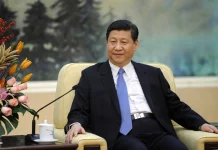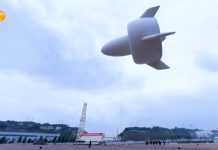BEIJING: A nucleic acid test laboratory named Huoyan, or Fire Eye, was built in only 10 hours and put into use in 21 hours in Shijiazhuang. It can test up to 1 million samples a day, significantly improving the city’s testing capability.
“In the process of combating the epidemic, early and accurate detection is particularly important,” said Du Yutao, board member of BGI Group, a Shenzhen-based biotech company which has established Huoyan labs in 16 cities across China and in 17 countries and regions across the world. Du, together with an experienced working group sent by BGI Group, arrived in her hometown Shijiazhuang on January 6. “I don’t know how to describe my feelings when I saw my hometown fall into silence,” said Du. “But we have accumulated rich experience and improved testing capacity. I believe the city will surely succeed in fighting the epidemic.” Elsewhere in China, the northeastern cities of Dalian and Shenyang in Liaoning Province have also conducted several rounds of citywide nucleic acid tests following a resurgence of COVID-19 cases since December last year. “Through large-scale testing, infections can be detected at the earliest,” said Zhao Lian, deputy director of the Dalian municipal health commission. “We’re carrying out scientific and accurate disinfection of the public environment in the city, including disinfection of areas which have seen resurgence of the virus and preventive disinfection of other areas,” said Liang Chunbo, director of the Dalian City Administration Bureau, adding that sanitation facilities such as garbage stations shall be sterilized at least three times a day. “After scientific research and accurate prevention and control, the epidemic situation in Dalian is currently under control,” said Zhao. As of Monday, no new confirmed cases were reported in the city for six consecutive days.
The province has decided to further extend the health observation period to 28 days for all inbound travelers from abroad. In addition to the current 14-day centralized medical quarantine and seven-day home observation, the new “14+7+7” model will enforce another week of health monitoring, during which the quarantined individual must regularly report body temperature to the local community.
– The Daily Mail-Beijing Review News exchange item





